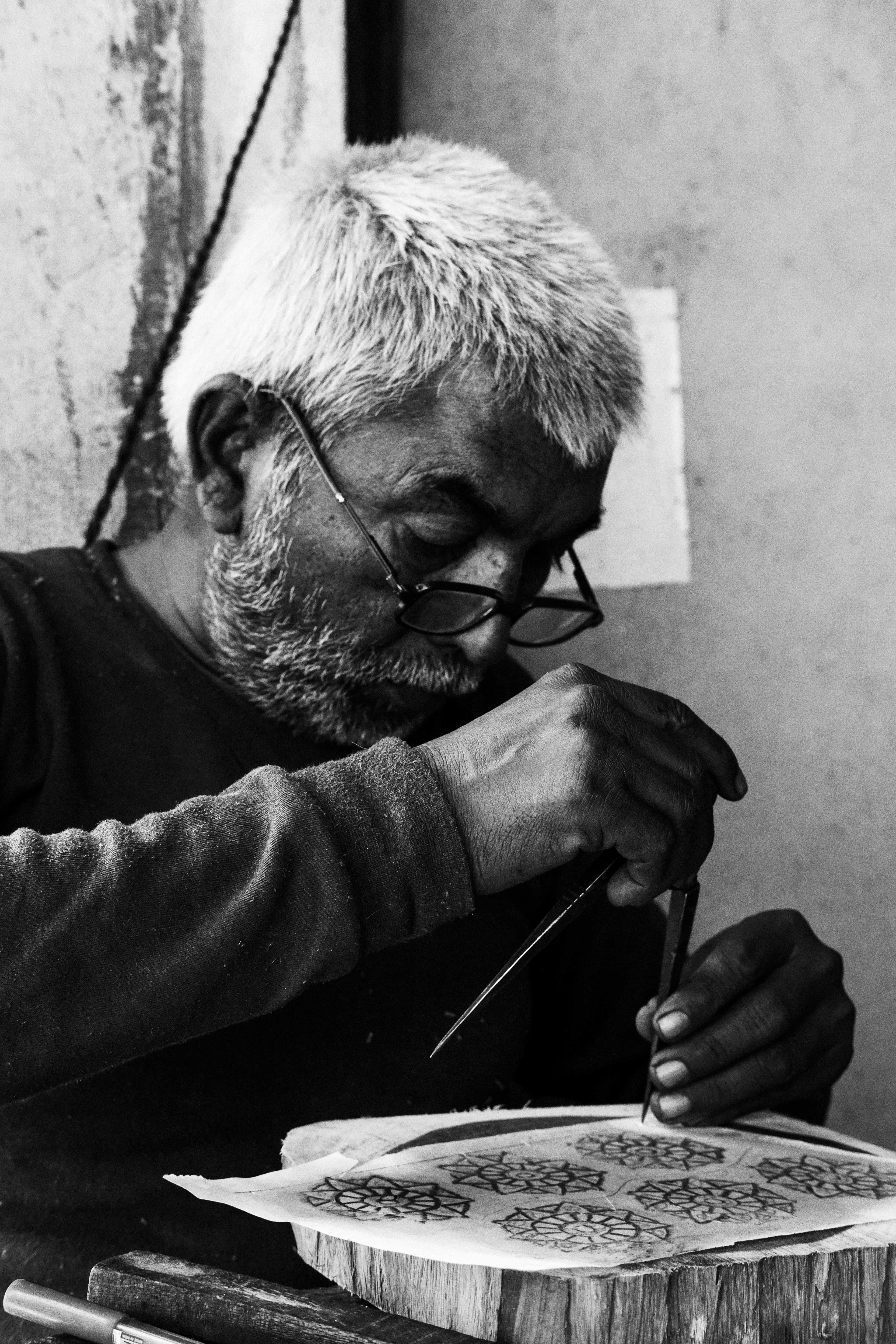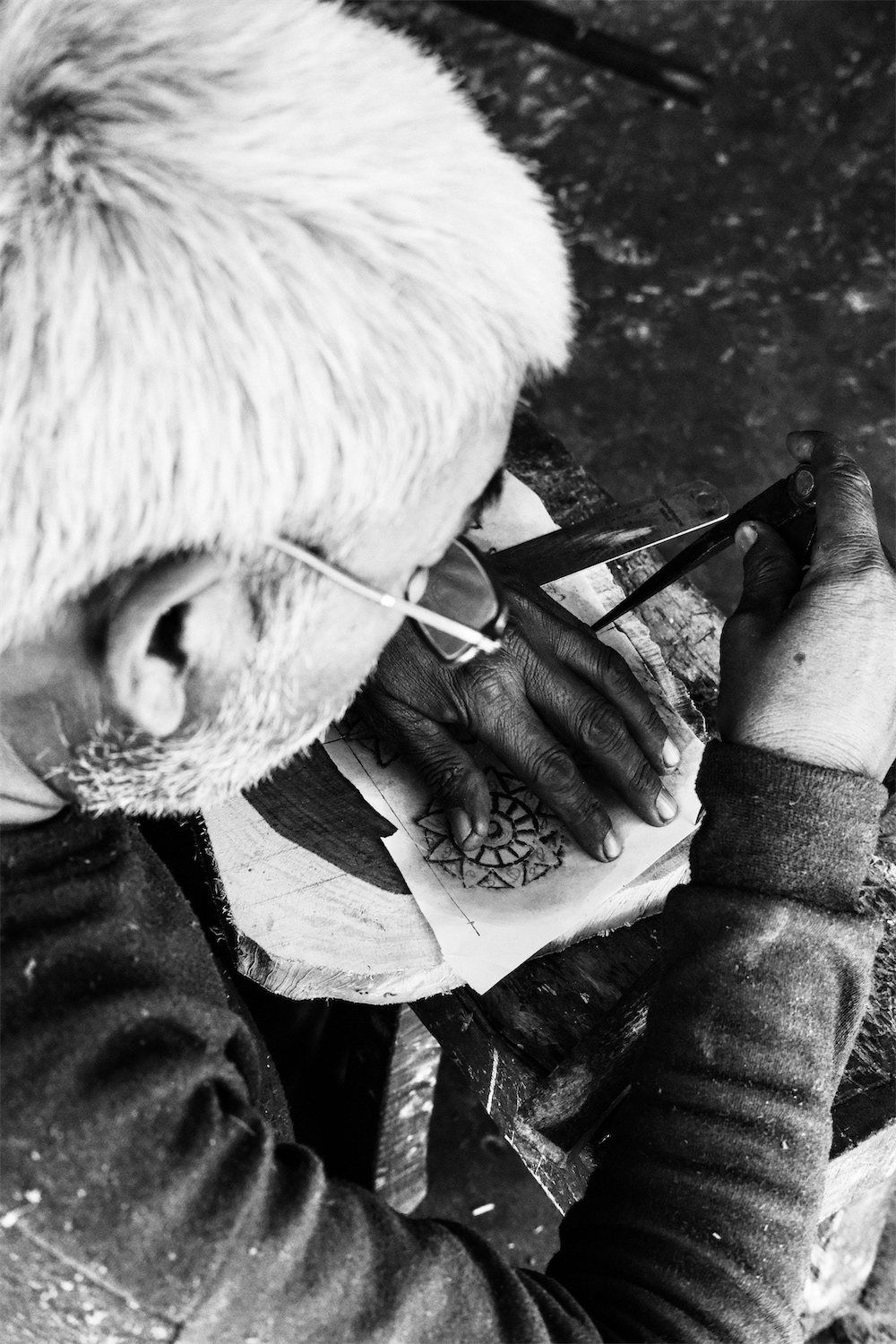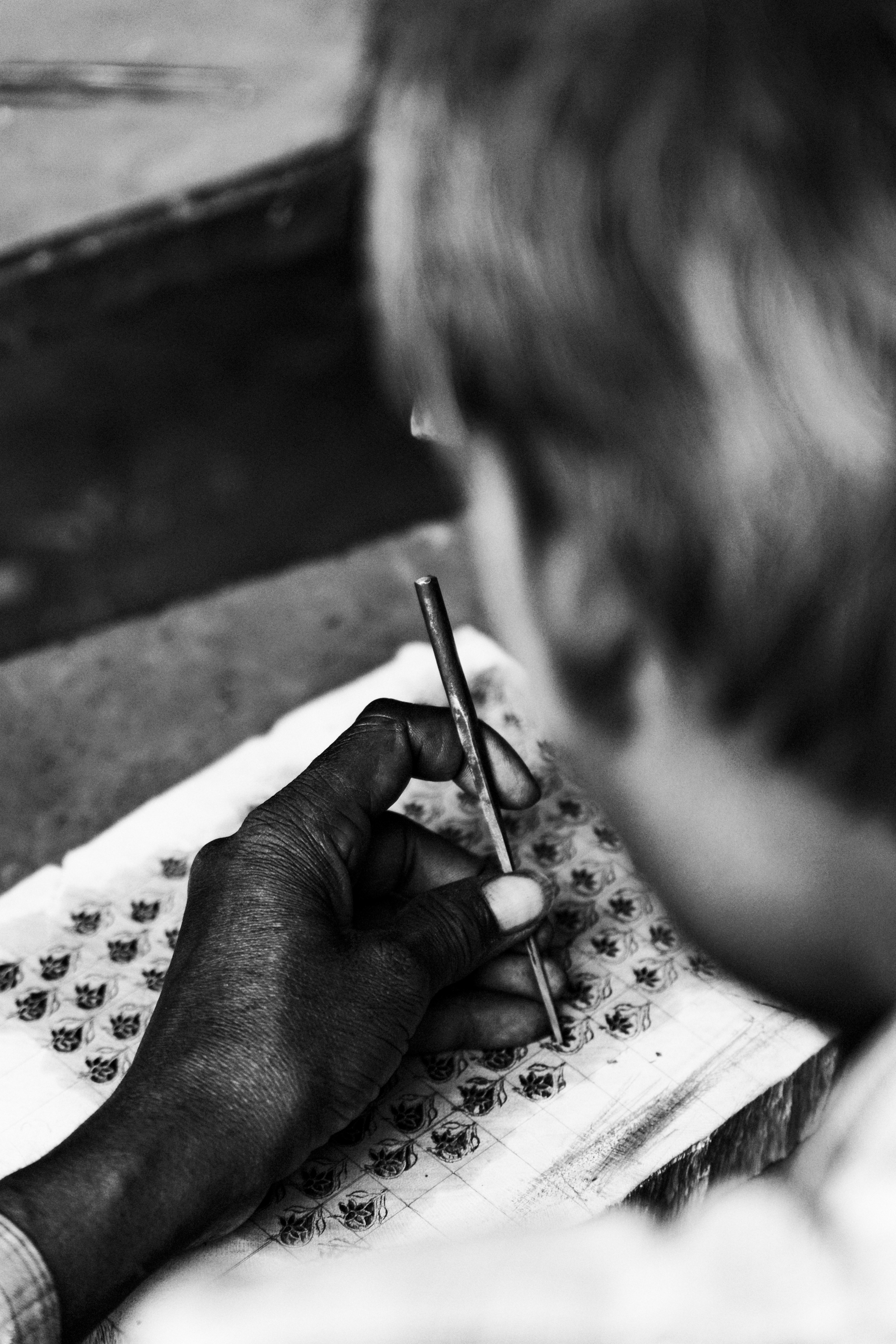Hands that Make
[2023 - ongoing]
The hands — much like the eyes — reveal what is hidden below the surface. Early humans used their hands to ignite the fire, hunt, fish, fight, and conduct a wide range of activities necessary for survival. Modern humans use their hands to reach for the stars. Our hands are essential for our evolution and survival. Equipped with unique opposable thumbs unlike any other animal, our hands are what allowed us to excel in our pursuits of life since the beginning of time. They unveil the underlying truth about our lives. They uncover our struggle, burden, and the life we choose. Looking at the hands of a person frees the viewer from any and all pre-conceived notions and enable the viewer to imagine the whole life of the person, their completeness, rather than just the aesthetic of a face.
Hands that Make [2022 - ongoing] is a long-term project documenting the centuries-old indigenous hand-craft traditions of India and the rest of South Asia through the hands of the people who still practice and preserve the ancient techniques and processes associated with these craft traditions.
Portrait of Seduram Chippa
Seduram Chippa is a veteran block-printmaker based in Bagru, Rajasthan. The Chippas are historically associated with the Bagru block-printmaking tradition, and most block-printmaking families based in Bagru belong to the Chippa community. The Chippas — Seduram, his son Badrinarayan, and grandsons Sachin and Shubham — run their own printmaking business and specialise in natural plant-based dye-making processes and techniques.
Seduram Chippa watches over Anjali Jain — a Chicago-based researcher of living archives
In recent years, Seduram Chippa has become the go-to source of vernacular block-printmaking knowledge and understanding of traditional dye-making ingredients for designers and researches looking to preserve and practice Bagru’s traditional natural dyes and printmaking processes and techniques.
Portrait of Aravind Sharma
Aravind Sharma is a print-maker based in Bagru, Rajasthan. Unlike the Chippas, Mr Sharma is not a local or a business-owner. He hails from Farrukhabad, Uttar Pradesh, and came to Bagru in the late-70s or early-80s with his mentor Dayaram Rajput in search of work.
His Right Hand
The lasting damage from decades of commercial print-making with caustic materials is made visible by the scarring and callusification of the skin. Sharma has been print-making since he was a teenager and started training with Dayaram.
Dayaram Rajput at Work
Although Dayaram is not a native of Bagru (like Aravind, he hails from Farrukhabad, Uttar Pradesh) he is a master of the Bagru block-printing technique, as well as Ajrak, Daboo, Indigo, and Azo-free natural block-printmaking processes.
The Hands of Dayaram Rajput

Rajendar Rajput designs a Printing Block - I

Rajendar Rajput designs a Printing Block - II

Carving a Printing Block
The Making of a Printing Block
The process of making a block print begins with designing the wood block. Artisans like Rajendar Rajput first draw the pattern on a piece of paper using simple tools such as compass and ruler. The hand-drawn paper template is then attached to a piece of wood using hot wax. Designs are carved by hand using hammer and chisel. It takes a craftsman between one day and a week to carve a block depending on the intricacy of the design and the size of the block.
Arvind Sharma shows a Printing Block
A complete set of printing blocks may take as long as several weeks to make and cost as much as 1,00,000 Indian Rupees, but such intricate and expensive sets are increasingly rare. Although the block-printing industry in Bagru has experienced a sort of revival in recent years, wages and margins still remain abysmally low.